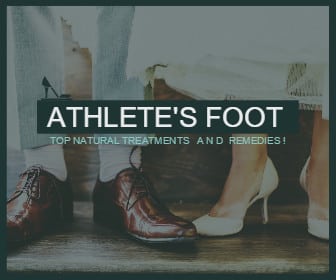
How to Cure Athlete’s Foot at Home Fast
In this article, you’ll learn and discover how to cure athlete’s foot at home fast.
Athlete’s foot is a common fungal infection of the skin also known as Tinea pedis. In an acute flare-up, the skin of the foot is red or white with scales, cracks, inflammation, cuts, and blisters. There is itching, burning, and stinging. Most often, it occurs in between the toes. During an acute flare-up, secondary bacterial infection is common. In chronic athlete’s foot, the skin of the sides and sole of the foot is pink and scaly and there is no itchiness. The fungus lives off dead skin cells and thrives in warm, damp environments, such as the floors around gym locker rooms and indoor swimming pools.
What can you do to help get rid of your athlete’s foot?
Herbal Supplements and Essential Oils That Help Heal Athlete’s Foot

Tea tree oil: The most common natural treatment for athlete’s foot is the essential oil tea tree (Melaleuca alternifolia). This is a home remedy that works as well as over-the-counter foot medications. It has anti-fungal properties. Tea tree oil can be applied directly to the skin three times a day, covering the affected area. About 4 to 10 drops are sufficient. Continue for two weeks after the fungal infection seems to have disappeared to ensure that it is eradicated. Tea tree oil also helps with fungal infections of the nails.

Grapefruit seed extract: Grapefruit seed extract, which is available at health food stores, is reported to have significant antifungal effects. Add drops of grapefruit seed extract to a wettened palm and apply it to the feet two to three times per day, or follow the manufacturer’s recommendations. Grapefruit seed extract can be added to the washing machine while you are washing socks.

Garlic: Put crushed garlic into dry socks before bed. Raw garlic can help to kill the athlete’s foot fungus.
Health Tip
Remember, people with chronic or recurring athlete’s foot should avoid excessive consumption of yeast products such as bread and other baked goods, as well as vinegar, and alcohol. People with higher intake of yeast may be more prone to athlete’s foot.




